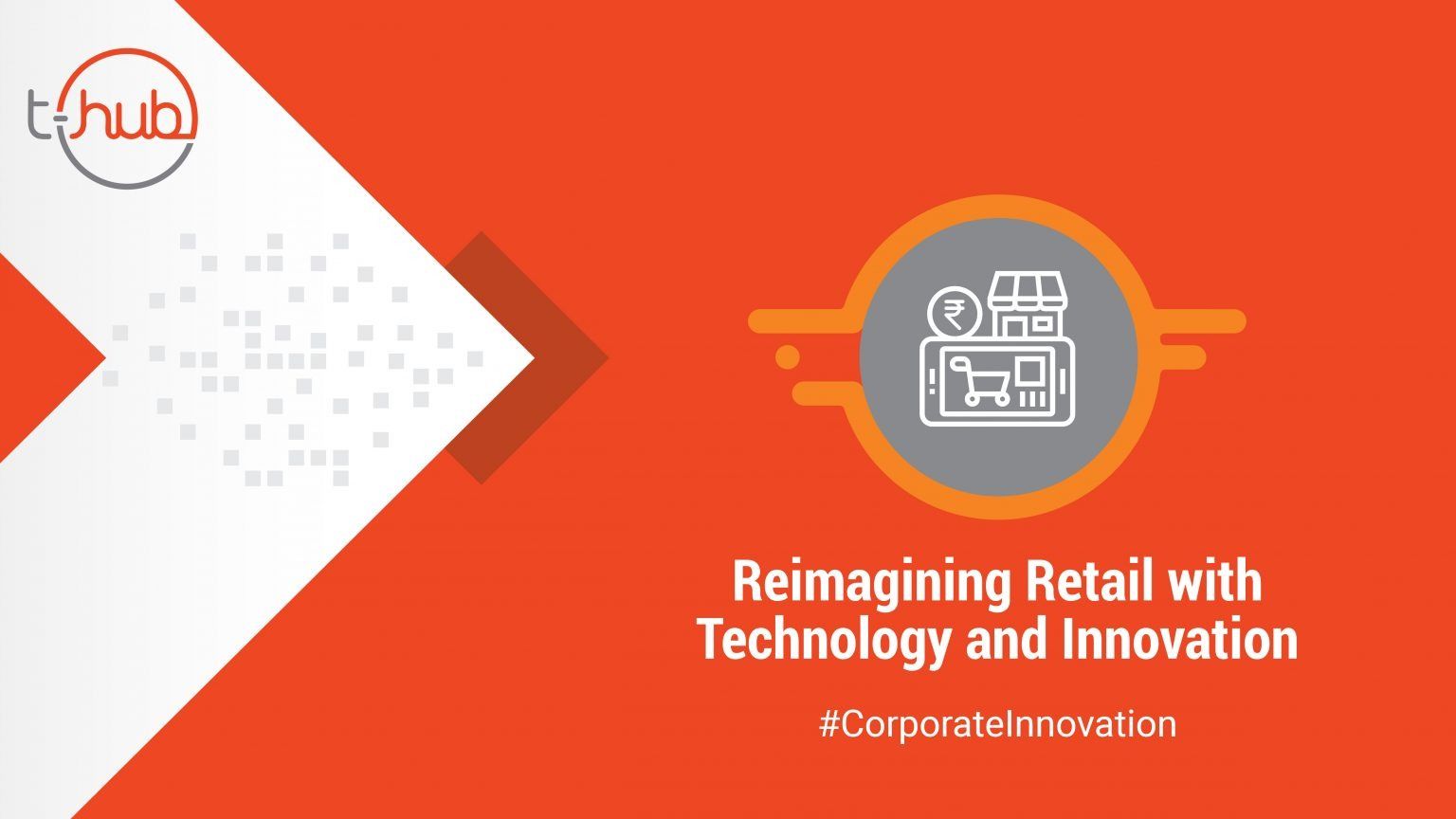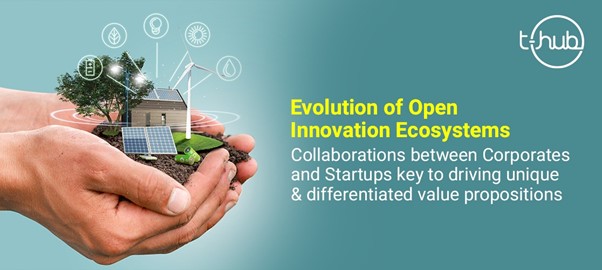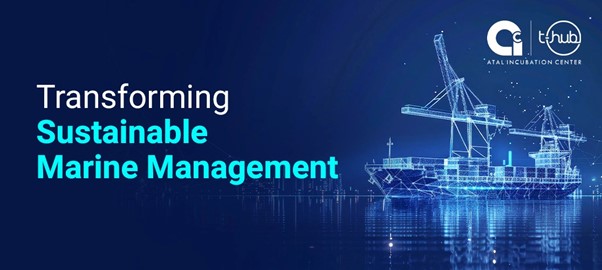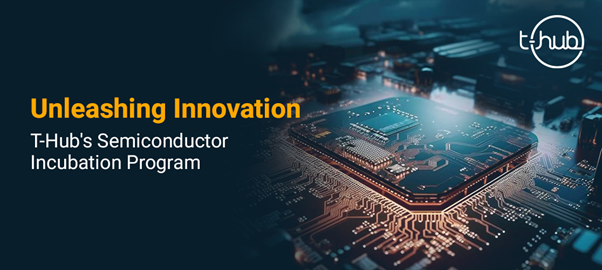The idea of this blog is to bring out some of the insights shared by industry experts during the recent Corporate Innovation roundtable anchored by T-Hub.
T-hub strongly believes this is an opportunity for us to create a collective view as to what this new normal is going to look like. Each participant represents a unique viewpoint on retail tech be it from what each of the corporates are thinking, what they’re reacting to, how they’re going about, and getting ready for this change. There were also a couple of startups who are in the midst of solving very large opportunities for retail tech.
An analogy to the parable of the blind men and elephant highlighted the fact though each perspective offered may be unique, but it’s limited in nature and the gathering of industry stalwarts and subject matter experts potentially benefits everyone through dialogue in this roundtable format, to gain a more collective, more comprehensive and inclusive understanding of the current retail landscape.
“As we tell our startups as much as it is a crisis, it also poses an opportunity for us to think about what is possible and not just wait for that possibility to happen. We together here create that possibility and that’s what this discussion is all about.”
-Ravi Narayan
Snapshot of the current state and trends in retail landscape
The retail environment is changing very rapidly that is reflective of customer’s awareness, better convenience and better and faster access to specific products.Keeping customer centricity as the core focus to develop unique and innovative solutions, thereby creating seamless and frictionless experiences for customers across different channels is the constant need of the hour.
The basic fundamental principle of retail business – getting more physical or digital footfall. It is a high transaction volume business where the ability to deliver great prices, deliver innovative products and great customer experience often becomes the most important determinant of success for any retailer.
An interesting trend we observe is race amongst retailers invest in technology, particularly on consumer-facing technology as consumers have moved ahead in terms of digital adoption, but a lot of retailers still lag behind compared to their consumers.
For one particular mega retailer the Infrastructure and processes which were set up for Black Friday were all very handy for the current situation and also 80% of orders were actually fulfilled from stores,which is a big advantage built over the years.
Supply chain flexibility is supercritical, Mega retailers are in a unique situation in some similar ways as they are not only just a retailer but are also designers, manufacturers and supply chain logisticians.
The shift from business analytics tool primarily for upper management to now dependency on the innovation tools.There exists churning of meaningful data by utilizing big data, AI and ML etc., to learn and understand consumer behaviour so as to predict and analyse current trends.And with 5g proliferation around the corner an opportunity for corporates to offer customers more meaningful information.
Alternate avenues & models of effective customer engagement –
A lot of new consumers get onto Omni channel for the first time. The fact that 25% new consumers coming online for the first time across categories is intriguing as retailers, particularly for businesses which both have physical as well as online formats. it is important to leverage and look at what this means from a growth standpoint.
Click and collect as a service is a very well-proven model in the Americas as well as in Europe. Pre-COVID in India this model would not even have even been considered let alone adopted. But what it offered customers is the ability to get what they wanted, but not having to go through a large format retail environment or actually shop and spend time in spaces which are considered busy.
Post COVID we see Mega retailers heavily reliant on these traffic intelligence tools and are tracking not only peaks in operating hours but also dived in deeper and tracked consumers’ time spending patterns within various departments of the store and then the other retailers started scrambling to adopt this solution to follow suit.
The crucial role and impact of technology in retail –
Technology is a quintessential component of any retail strategy as new technologies continue to explode across the marketplace and consumers demand that the shopping experiences follow through.These technologies are applied across the value chain of retail, making sure that it’ll be able to drive stronger business impact across the digital world.
The e-commerce boom necessitated the adoption of emerging technologies and the COVID pandemic has been an instrumental catalyst which has accelerated these technologies and applications which were either way organically and continuously evolving.
AI and ML became an integral part of any business for processing data, assessing needs deploying the right measures both through predictive and prescriptive models.
There is a lot of room to innovate and improve when we look at Enterprise technology, which a lot of retailers have still not managed to do. And often we can see that because of this challenge as there is no one quick fix when it comes to technology.The absence of supporting enterprise tech on the back end may result in compromised customer experience on the front end.
There are so many buzzwords and a lot of new technology and plenty of experimentation, and even unproven technologies which are finding takers among retailers.
The Retail intelligence space in general is virtually different in emerging markets compared to developed markets where large corporate stores work. But the principles remain same with regards to customer-centricity in emerging markets and retail execution but the challenges and execution aspects slightly differ, but these need to be customized to an ecosystem where a shopkeeper (who may not necessarily be tech-savvy) is essentially adopting solutions to bridge the gap to transform into a digitized entity.
A lot of investment in technology and much more higher investments in analytics. One major aspect in insurance is it is about data . Auto insurance policy and tech adoption in the process called as pre-inspection and upon vehicle meeting with an accident, to these processes we see application of computer vision. Process of digitizing of claims to bridge the gap closer to the instant claim settlements. There exists few real time pilots using computer VR technologies to assess the damage to the cars and then leverage that in the entire inspection and repair process.
Technology is constant and ever – evolving, the simple focus for retailers is on how to extract customer insights? What is required in this current period? What are their needs? And the ability to kind of understand that and be able to leverage technology and provide that particular seamless service to address those is the need of the moment.
Innovation Culture and its accelerated adoption amid the pandemic-
In the retail context, it’s even more important to see that that particular innovation is actually delivering towards the business goals. The value of new innovation coming through technology will always be seen by both the organization as well as consumers.
80% of innovations don’t see the light of day and the primary reason behind it is because from a back end infrastructure standpoint, there’s a lack of extensibility and presence of vendor lock-in and therefore from operational standpoint these are all existing challenges yet to be tackled.
A combination of strong internal policies favouring innovation to internal associates or team members to partnerships with R&D focused institutions to startups, all these combined efforts culminate into what drives an Agilent transformative culture.
COVID has forced retailers to take a hard look as they realize in order to implement these technologies, it can’t be done in a very siloed way it has to be integrated with the existing technology platform to look at the backend of their technology, infrastructure, try to remove vendor lock-ins make sure that it’s extensible and robust in order to incorporate other external innovations.
Techstars came out with an innovative model, which is an outcome driven pricing model, under this outcome driven pricing model the open innovation collaborative experiments are far more palatable to the larger enterprises which have the potential to be an amazing trend that could work on behalf of accelerating innovation.
Adoption of new technology to improve your customer service experience can be a complex undertaking. As it is a significant investment, and with the sheer number of vendors offering varying solutions, determining which one will work best for your organization’s unique needs can seem impossible. How will you get everyone to agree on one solution? What if the technology doesn’t work as expected?
Therefore choosing a technology solution that’s available with an outcome-based pricing model is an excellent way to remove many of the concerns associated with customer experience investments.
Benefits OBP model-
- Reserve better understanding of company’s challenges
- One pays for results, not technology
- Reduced Risk
- Vendor committed to and invests in continued optimization
- No hidden fees or surprise expenses
“Innovation = invention / technology x crisis. So hence this multiplier effect is working far better compared to what it was and the hope is it stays that way, not the virus but the innovation speed.”
Government initiatives and other efforts –
Global Linker is partnered with the Telangana state global income program with the intention of digitizing small businesses in the state of Telangana.
Trying to solve issues for small businesses and helping them digitize en masse, created a program that is built around digitizing business cards, digitizing profiles of small businesses and digitizing their catalogs.This allows rapid participation in digitized commerce.
Retail is one of the most important sectors now in Telangana, one of the priority sectors and part of the sector size about 1.5 lakh crores, which is roughly about $21 billion with a growth rate of about 16.2%, which is even greater than the state GDP growth rate(12.6%) for the last financial year. Therefore focus is being given to the retail sector in terms of policy support and other interventions –
- The Government of Telangana partnered with some local tech companies such as now floats, Tiger sheets, Zoho and Microsoft and the idea is that most of these companies should start coming online and start retailing globally.
- The Government of Telangana supports the skill development and training programs for the retail sector. There’s also a concept of development of the retail entertainment zones which is going to be similar to the outlet malls from countries like US
- Under the Telangana state retail policy the retail sector will also develop backward linkages for direct sourcing from SMEs and farmers. A task force to be commissioned to create a technology platform which will actually link the farmers and SMEs directly with the retail clients through common logistics and warehousing facilities.
Since the retail sector is a rapidly changing environment, most of the corporates are focussing on keeping customer centricity as the core of the transformation ensuring efficacy on better products, agility, last mile delivery, convenience, efficiency, and creating seamless and frictionless experiences for the customers. We strongly believe that the current scenario has given an opportunity for bringing about a radical change in the current processes towards digitization and technology adoption to help surge the Retail industry to greater heights. It is an opportune time to take innovation to the next level.
We at T-Hub, power Corporate Innovation through high-impact partnerships and transform your business models for the better. Know more here.






